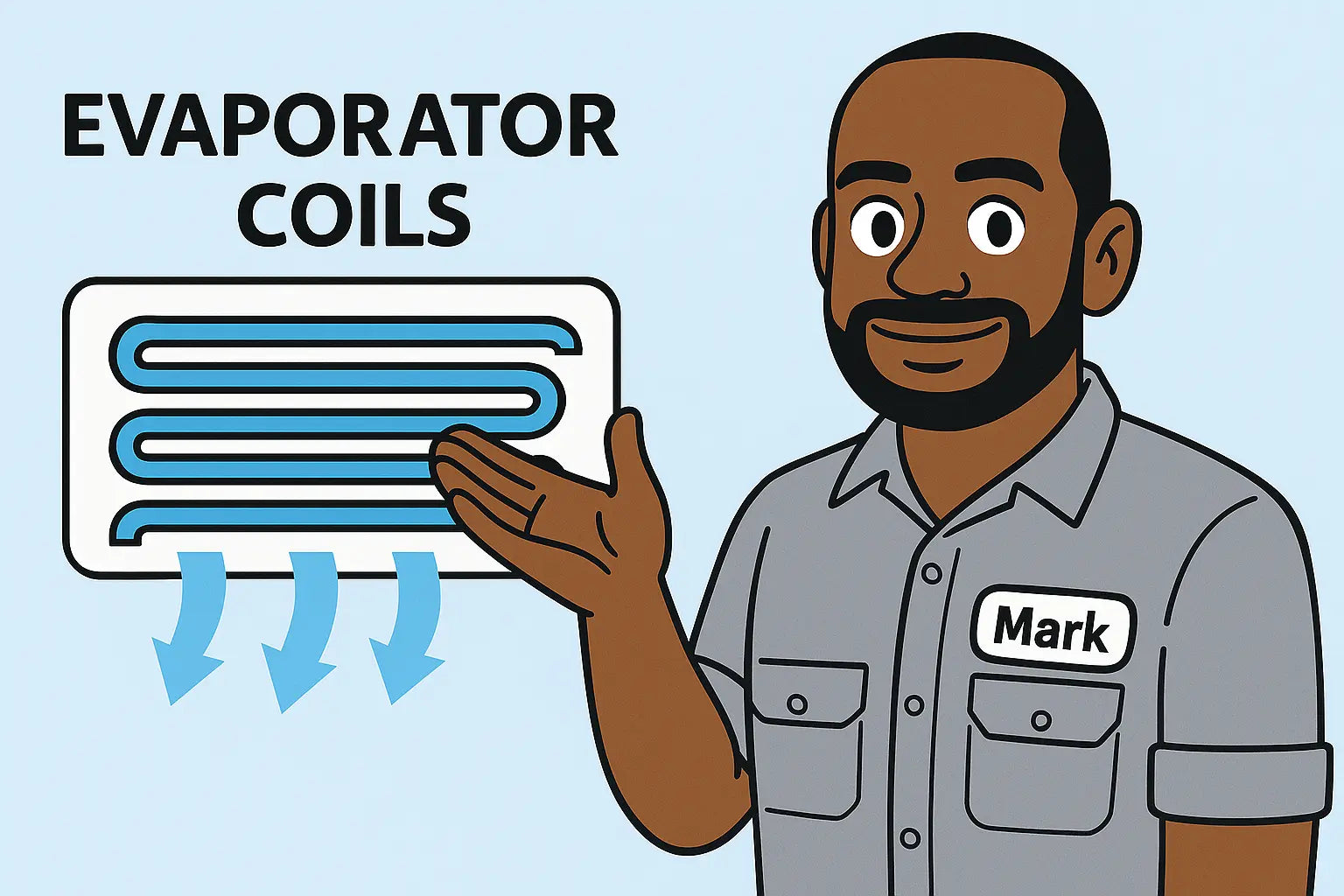Hey, I’m Mark—and I Know Coils
Let me guess: you're here because your A/C system’s throwing a tantrum, and you've heard the words "evaporator coil" tossed around like it's some mythical beast. Well, good news—it's not. It’s just a super important piece of your HVAC system, and once you understand it, you’re halfway to being your own HVAC hero 🦸♂️.
I’ve been neck-deep in HVAC units for over two decades, and lemme tell you: if your coil’s off, your whole system’s off. So whether you’re lookin’ to install a new one or fix a frosty old beast, grab a wrench (or a coffee) and let’s get into it.
What the Heck Is an Evaporator Coil, Anyway?
Your evaporator coil is the part of the system that absorbs heat from your home’s air. It’s located inside or near your air handler or furnace. Refrigerant flows through the coil, and as warm air passes over it, heat gets sucked out. Boom—cool air is born.
For a deeper dive, I recommend checkin’ out Energy.gov’s explanation of air conditioner components—they break it down with diagrams and all.
Picking the Right Coil: What You Gotta Know
Before you install anything, you've gotta match your coil with your system. It’s not a mix-n-match game, trust me. Here’s what you’ll need to know:
-
BTU capacity: Make sure it lines up with your A/C. If you're running a 3-ton system (36,000 BTUs), your coil better match.
-
Refrigerant type: These days, we’re seeing more R-32 coils (and thank God—better for efficiency and the planet 🌍). Make sure the coil matches your refrigerant.
-
Orientation: Vertical, horizontal, or “multi-poise” — depending on how your system is installed.
-
Cased vs. uncased: Cased coils come with a cabinet. Uncased ones are bare and can be trimmed/customized on install.
For the folks wanting a solid lineup, check out The Furnace Outlet’s evaporator coils collection—they’ve got what you need, and I’ve used 'em on installs across half the county.
Installing an Evaporator Coil (Mark Style)
Now let’s get down to the nuts and bolts. If you’re DIYing, make sure you’ve got:
-
Proper tools (tube cutter, torque wrench, vacuum pump)
-
Protective gear
-
Good ventilation
-
The right-sized coil for your system
Step-by-step rundown:
-
Power off the system. Always.
-
Disconnect the old coil (if replacing). Recover the refrigerant legally—don’t just dump it. (Check the EPA refrigerant handling rules if you’re unsure.)
-
Brazing the lines: Heat + copper = sealed connections. Don’t overheat. Practice if you’re new.
-
Pull vacuum: Remove all moisture and air from the system.
-
Charge with refrigerant: According to manufacturer specs.
-
Test for leaks: Use nitrogen or a good ol’ electronic detector.
-
Start her up and check airflow.
⚠️ Not confident? Get a pro. This isn’t Lego. If you overcharge refrigerant or mess up the brazing, you’ll wreck the system—and your wallet.
Troubleshooting Like a Veteran
Alright, coil’s in, system’s running. But what if it’s acting up? Here are the usual suspects:
❄️ 1. Frozen Coils
Your coil’s icing up like a freezer? Check:
-
Dirty air filters
-
Low refrigerant
-
Airflow obstructions
-
Malfunctioning fan
Want a full walk-through? This article from Family Handyman offers excellent hands-on advice.
💦 2. Water Leaks
Leaky coils could be due to:
-
Clogged drain pans or lines
-
Rusted-out drip pans
-
Poor installation angles
Check Bob Vila’s A/C troubleshooting guide for more tips on the moisture mystery.
🔥 3. Warm Air
If the system’s blowing hot air:
-
Make sure the thermostat’s set right (you’d be surprised)
-
Inspect the refrigerant charge
-
Test your blower motor
Not sure how to test your charge? HVAC School has a killer breakdown on superheat and subcooling measurements.
Maintenance Tips to Keep It Chill
Even a perfect install can go sideways without regular TLC. Here’s what I do for every customer:
-
Clean the coil annually (use a foaming coil cleaner, not water alone)
-
Check refrigerant charge yearly
-
Replace filters every 1–3 months
-
Inspect and flush drain lines
This Carrier HVAC maintenance guide has a good seasonal checklist if you want a printable version.
When to Replace Your Evaporator Coil
Coils aren’t forever. If yours is:
-
Over 10–15 years old
-
Leaking refrigerant
-
Showing rust or corrosion
-
Freezing frequently despite clean filters
…then it might be time to swap it out. Sometimes it’s cheaper to replace the coil than to chase leaks or recharge refrigerant every year.
Final Words from Your Coil Coach, Mark
Alright—if you’ve made it this far, you’re not just someone tryin’ to fix your A/C. You’re someone who gives a damn 💪. I like that.
Evaporator coils may not get the spotlight like thermostats or condensers, but they’re the unsung heroes of your system. Treat ’em right, and they’ll keep you cool, save you money, and give you fewer summer headaches.
Need a new coil? Head over to The Furnace Outlet—they’ve got all the good stuff and solid support.
Need more advanced installation tips for your evaporator coil? Visit: Here's the Right Way to Do It (And What to Avoid).
Until next time, stay frosty.
– Mark Callahan 🧊🔧







